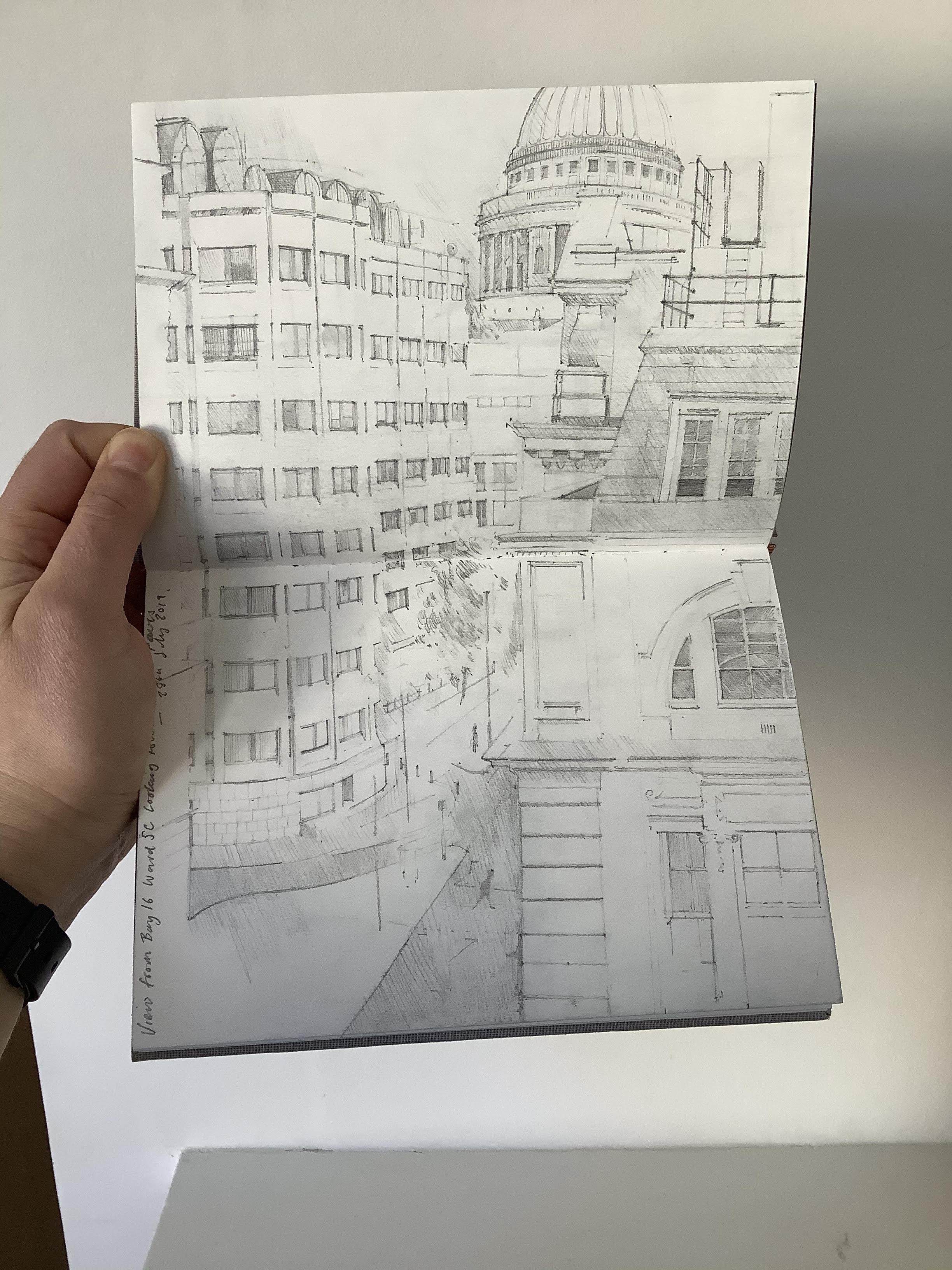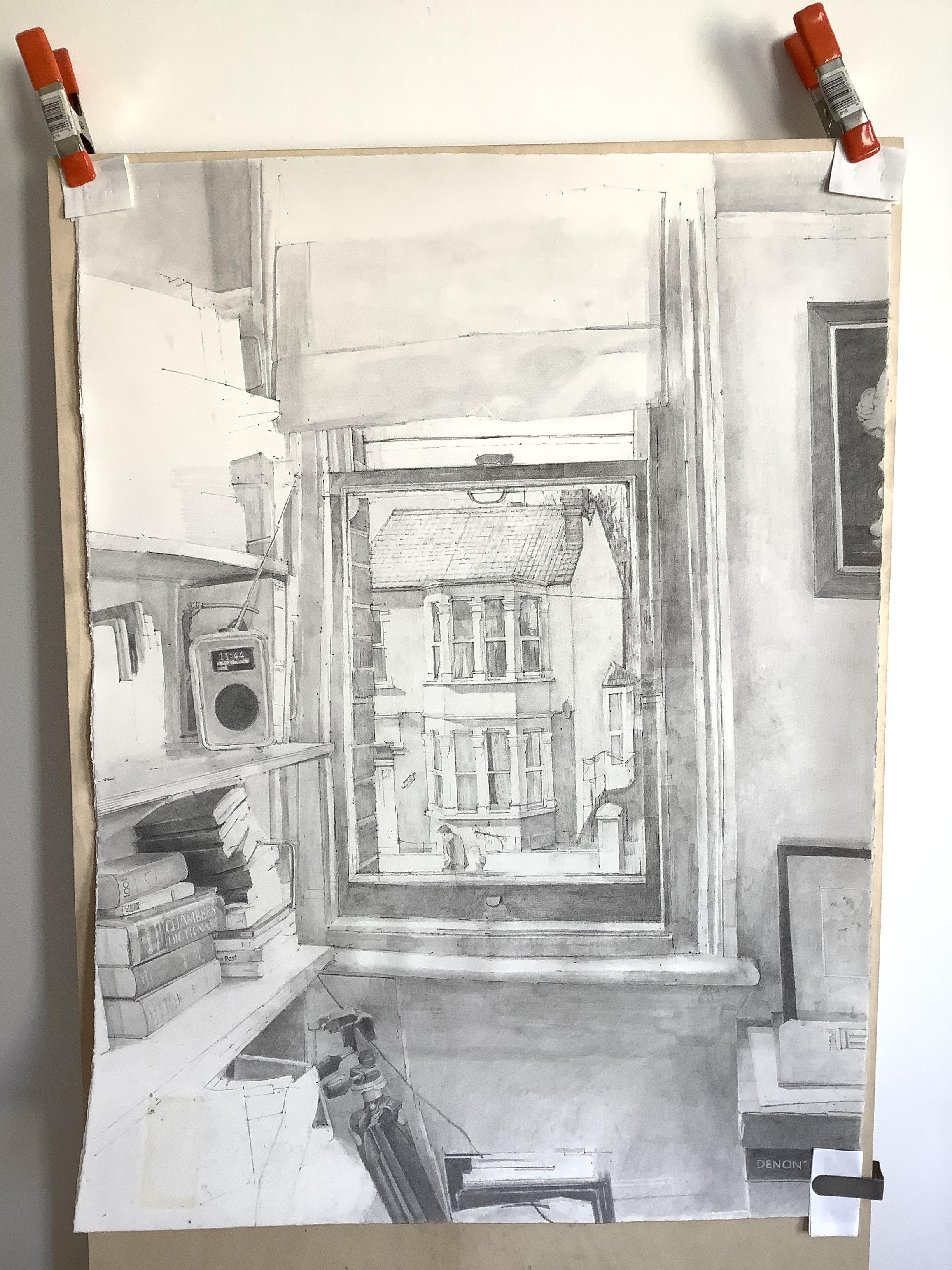By Christopher Harrup and Rebecca Barton
What can you see – really see – outside your windows? This workshop encourages you to record the minutiae of life.
Don’t forget to submit your creations or post online and tag @natsatclub and @raveoutreach
Overview
Looking, seeing and recording is a fundamental skill in a lot of creative professions, whether you are a fine artist, film maker, architect or illustrator. Paying attention to what is around you, really focusing on the details that in normal life are so easily looked over or dismissed, is a valuable way to spend your time.
Sketchbooks are a wonderful way to record what you can see, as well as what you think and feel. They are private places where you can explore creative ideas without the pressure of producing final outcomes. The more you draw the better at it you become, and it’s a wonderful way to spend your time.
Please follow the activities below and submit your favourite drawing/s.
Materials needed

-
Keep it simple – you can include colour/paint later if you choose to develop your drawings – for now stick to pencils. Ideally use softer pencils (2B is great), and keep them sharp
-
The sketchbook can be any size or format – if you don’t have a sketchbook, then printing paper or old schoolbooks will work just as well. Be inventive!
Workshop Brief

Drawings courtesy of Christopher Harrup (Ravensbourne tutor)
What can you see – really see – from out of your windows? – is it the sky, a park, rows of houses, your garden – perhaps someone gardening or washing their car, rubbish bins – is there litter in the street, a cat sunning itself on a wall…? This workshop encourages you to record the minutiae of life, tiny details, leaves, notices wrapped round lampposts, anything you can see.
Do a series of drawings that record the view from 3 windows in your home. Make sure you are organised so you can move around easily and not get in anyone’s way. Remember there is no judgement, no deadline, just you with some paper, pencil and a view – even encourage others in your family to do it – I know I am going to have a go!
Spend 5 minutes sitting in front of the window, just looking at what you can see, decide if you want to focus on the whole view or just an element of it. Once you have done that, draw what you can see, the timings give you one hour per view – you can choose to spend this all on one drawing, or if you like a series of quick sketches – but for at least one window try to complete an entire window view that takes you an hour.
Suggestions
- Consider how you frame the view. Including the window, or some of the window, will make the viewer feel enclosed.
- Cross bars on windows can be useful to divide the composition.
- Drawing close to the window, eliminating the frame, will open up the view.
- Think about how you use linear instance, stronger marks come forward and lighter marks recede so you can give the illusion of space.
- Keep pencils sharp, use 2B or softer if you have a range of pencils to hand, rubbing out is part of drawing.
Further Development
Once the workshop is over consider developing your drawings. Maybe they are prep sketches for a more developed piece that you can do during the week. Consider drawing from the same windows at different times of day, to capture different light. Think about creating more abstract pieces that are a personal/conceptual response to what you see rather than a realistic version.
Thank you for taking part in the Ravensbourne University London Saturday Club Workshop.
Submit your drawings or post online and tag @natsatclub and @raveoutreach
Resources & References

Contributed by Rebecca Barton and Christopher Harrup, Ravensbourne University London Art&Design Saturday Club
Rebecca has worked as a for several companies as a freelance womenswear designer, clients have included Mulberry, River Island, Kookai, Albeni. Specialising in womenswear tailoring, but also more recently resort wear.
“It’s been great to work with such a friendly and enthusiastic group of young people who have shown their genuine love, talent and commitment to learning about the fashion industry.”
Christopher is a visual artist and educator working in London and the South East, his work is multidisciplinary and includes Drawing, Moving Image and Photography.
“Through making work I have come to realise the value of questioning, every project is an opportunity for discovery, this is an ethos I endeavour to pass on to my students.”